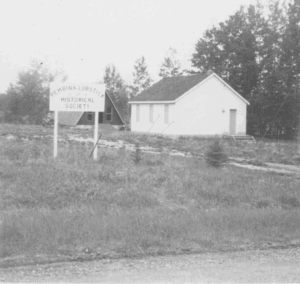Scout Service
The Scout Hall was finally completed in 1931. In 1932, Gladys Schroder (Stephens) took over leadership of the Brownies, with Gladys Smith (and later Thelma Mitchell) now leading the Girl Guides. Previously established were the Wolf Cubs, led by Bob Gillard. These groups declined after the closure of the Evansburg mine in 1936, and eventually disbanded.
Scout groups were re-established around 1950. The First Evansburg Brownie Pack was led by Anna Wade and assisted by Alice Campbell. A few years later, the First Evansburg Girl Guide Company was established with Mary Cumming as leader and Stella Lorenz as assistant. During these years, the Brownies and Girl Guides were re-established four times, as leaders continuously resigned. Both groups discontinued in the 1960s, and would have been the last groups to use the Scout Hall.
In 1969, the Kinette Club of Evansburg called for the creation of a scout group, and the project was taken on by Bev Jukosky and Donna Mae Mitchell. They registered at Girl Guide headquarters in December 1969 as the First Evansburg Brownie Company, despite technically being the second. This group held meetings in various rooms at Evansview School.
In 1973, the Evansburg Brownies joined the 1st Entwistle (Royal Purple) Company of Girl Guides. In 1982, the name was changed to the 1st Pembina Scouts, to include girls from both towns. By 1985, a Girl Guides group was established by Irene McDougall, with Brownies being reorganized under Sherry Allen. Wolf Cubs and Beaver Scouts were also active at this time.
The Scouts groups continued on after this point.
